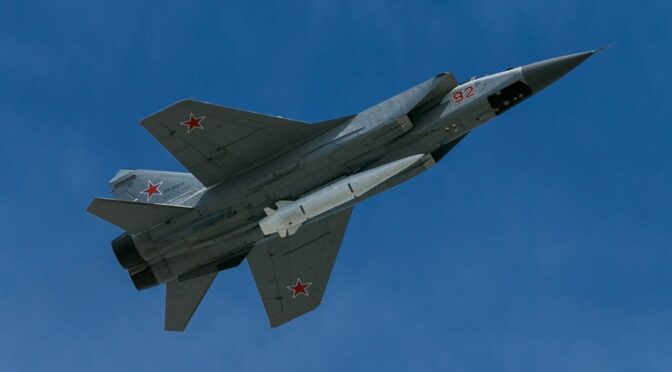Article published in The Daily Telegraph, 18 May 2023. © Richard Kemp
I was in Kyiv on Monday night when Ukraine’s capital was hit by its biggest missile attack since the war began.
It was more than just another attempt to terrorise the city. Following hard on the heels of President Zelensky’s visit to Europe with renewed guarantees of military aid, it amounted to a demonstration of force by an increasingly beleaguered Russian dictator.
In half an hour the city was attacked from the north, south and east. In came ballistic missiles, Iranian Shahed loitering drones, Kalibr ‘hypersonic’ cruise missiles launched from warships in the Black Sea, and Kinzhal hypersonic missiles fired from MiG-31K fighter planes.
The result of this tremendous firepower was nothing short of abject humiliation for Putin.
I watched as Ukraine’s combined air defence forces, including American Patriots and German Gepards, seemingly knocked every Russian missile out of the sky. Just three people were injured by falling rocket debris, there was minimal physical damage and – by daylight – the city had returned to normal as though nothing had happened.
This event symbolises both Ukrainian resilience and Russian weakness. Especially the latter.
After Putin was taken aback by the unexpected failure of his initial invasion last February, he came up with a hasty Plan B. That was to invest in Wunderwaffe (‘wonder weapons’), in the same way as Hitler did in the second half of the Second World War, while building up his forces for a renewed offensive this spring.
That much-heralded assault has not materialised, with the Russian army so far barely able to push forward a few miles in one or two places – and at the cost of massive casualties. I spoke today to a Ukrainian field commander fresh from the fighting in Bakhmut, who told me that after the war Ukraine should construct a monument to Russian military corruption, to which he attributes its inability to build and equip sufficient forces or learn from repeated tactical and strategic blunders.
The failure of the second prong of Putin’s plan – his wonder weapons – is perhaps even more damaging. When he first unveiled the Kinzhals in 2018 he claimed they could penetrate all existing and future missile defence systems. Just before the invasion of Ukraine he boasted that Russia was the global leader in hypersonic missiles and, by the time other countries caught up, was likely to have developed technology to counteract these new weapons.
The harsh reality underlined in the latest apparent downing of all six Kinzhals fired at Kyiv has added to questions about Russia’s ability to project military power, including its nuclear arsenal, which has been the most significant factor in deterring all-out Western support for Ukraine.
US and European hesitancy over donating some of the much-needed weaponry for fear of escalation is being steadily overcome as Russia’s impotence becomes increasingly apparent. The UK’s recent supply of Storm Shadow long-range missiles and British and French decisions this week to train Ukrainian pilots and work with other countries to deliver F-16s are the latest indications of a growing resolve.
But it would be foolhardy to take any of this as an indication that a future Ukrainian victory is guaranteed. Kyiv is still in a desperate fight for its life and there is no sign that Russia is likely to give up. It is far from clear that the Ukrainian army possesses sufficient resources to mount the decisive counter-offensive that has long been talked of as imminent.
Commanders on the ground that I spoke to this week, while unfailingly grateful for what has been supplied so far, all stressed the urgent need for more tanks, combat planes, ammunition, missiles, artillery shells and drones. Morale remains high among Ukrainian forces despite over a year of war. Their bravery and fighting skill are unquestioned. But ultimately they can only prevail if the West continues to step up its military aid.
Putin’s latest disaster over Kyiv may well help to achieve that.
Image: MiG-31K transporting a Kinzhal missile, 2018 Victory Day parade. Source: Wikimedia Commons

